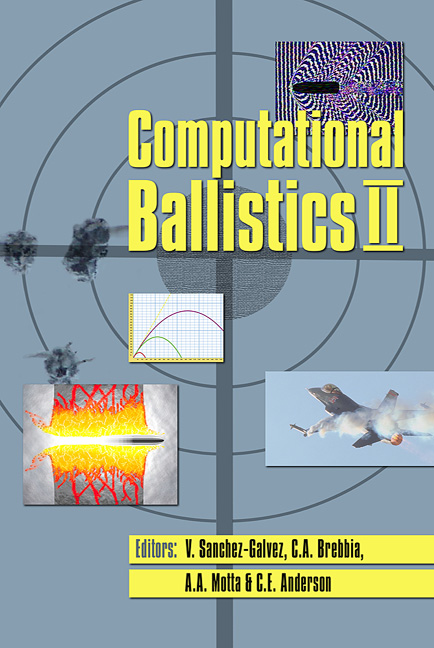Numerical Analysis For Double-base Propellant Combustion
Price
Free (open access)
Transaction
Volume
40
Pages
11
Published
2005
Size
376 kb
Paper DOI
10.2495/CBAL050261
Copyright
WIT Press
Author(s)
A. Peratta, C. Gonzalez & E. Dick
Abstract
A comprehensive hybrid Finite Volume (FV) Arbitrary Lagrangian–Eulerian (ALE) scheme has been implemented in order to study the combustion of a Double-Base (DB) solid homogeneous propellant (EC1 composition of 1100cal/g: 43% Nitrocellulose + 52% Nitroglycerine). The formulation takes into account time dependent chemically reacting flows and is based on the complete set of conservation equations of mass, momentum, energy, and species concentration, considering finite rate chemistry, as well as thermodynamic and transport property variations with temperature and species concentration. The gas phase is treated as a compressible premixed chemically reacting flow, composed of 11 species. The condensed phase is treated as a homogeneous incompressible mixture of 12 reactive species. The chemical model is implemented with 7 unidirectional global reactions. A 1D model has been prepared in order to calculate the composition, flow pressure, temperature, velocity and heat release in the dark zone, the primary and secondary flame regions. The burning rate of the propellant results as a consequence of the zero concentration of solid in the last cell of the condensed phase in contact with the gas phase. The calculation employs an ALE technique in order to dynamically adapt the grid resolution to the gradients of concentration, temperature and heat release along the flame zone, and to incorporate new cells in the gas phase coming from the \“burnt” cells of the condensed phase. The method developed provides an accurate description of flame structure and flame dynamics near the burning surface as compared with earlier publications and can be used to study a variety of time dependent processes including transient ignition and combustion instabilities.
Keywords




